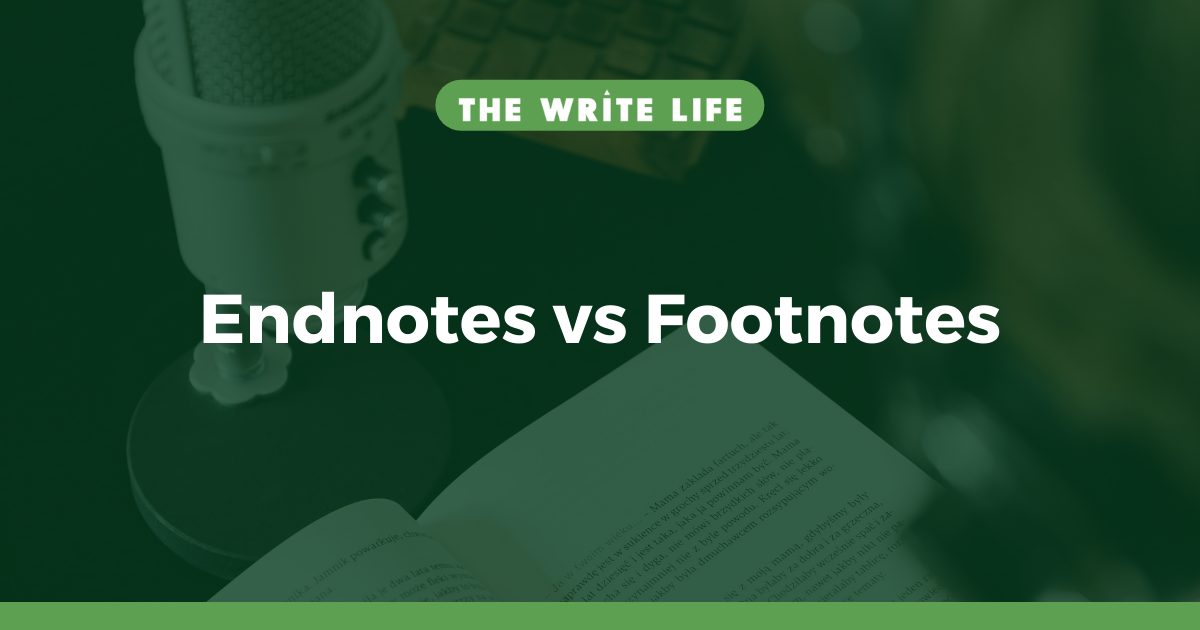
There’s often confusion with endnotes vs footnotes, and when to use one instead of the other. They kind of look the same but they serve different functions.
A footnote is an in-text citation found in the footer of the page.
You’ll know it’s a footnote when you see a superscript number (a small, raised number) next to a word or chart, which links to a short citation at the bottom of the page. The footnote will contain additional context or information.
What is an Endnote?
An endnote is an in-text citation found at the end of the chapter or document.
Similar to a footnote, an endnote gives the reader more information about a topic. However, their location at the end of a chapter allows for them to contain more content than a footnote as there is more space than at the bottom of the page.
Endnotes and footnotes are citations, and they both provide additional information to readers without interrupting the flow of words.
In general, citations are required when writing an academic paper or research study. They’re also expected for essays, certain non-fiction books, and journal articles.
Which citation you go with often depends on the style you’re writing to so take a moment to check the style requirements and become familiar with their prefered citation method.
If you aren’t using many citations and they’re short, then footnotes are fine. If you have longer citations and require additional space, then endnotes may serve you better.
In general, the use of footnotes in most academic writing is now considered a bit outdated and has been replaced by endnotes, which are much easier to place in your paper, even with the advent of word processing programs. However, some disciplines, such as law and history, still predominantly utilize footnotes.
The format you use depends on what you’re writing (books, articles, essays, etc. have different requirements) and what style you’re using. However, citations contain similar elements:
- A superscript number within the body of text, which corresponding number contains additional information
- A page number or reference, which tells you the source of the information within the text
Here’s an example of a citation:
1. Carolyn Kay, Art and the German Bourgeoisie: Alfred Lichtwark and Modern Painting in Hamburg, 1886-1914 (Toronto: University of Toronto Press, 2002), 100.
Novels that Use Citations
Many non-fiction works use citation, but did you know some fiction work use them too? In these cases, authors utilize footnotes or endnotes to introduce readers to a new world with additional commentary. Citations can also add understanding to a character or a subject, making the story even more interesting.
Here’s a few examples of novels that utilize citations:
The Mezzanine by Nicholson Baker (2020)
This short novel uses footnotes to tell the unspoken thoughts of a man on his lunch break. The author adds footnotes to give us an insight into the narrator’s mind, drawing out his frustrations, thoughts, and expressions.
Crazy Rich Asians by Kevin Kwan (2013)
The satirical novel that made us fall in love and laugh at the same time also used excessive footnotes, which acted as witty interjections. Being a novel centered on the money-powered families of East Asia, the footnotes offer a mix of gossip and affirmations for the reader to refer to throughout.
Jonathan Strange & Mr Norrell by Susanna Clarke (2004)
In this novel, footnotes are used to determine which characters get to take up the majority of the body text, and which ones simply reside at the bottom of the page. This is one way authors can use footnotes to place importance (or lack of) on certain characters or objects.
Endnotes and footnotes serve to add information and context for readers to help deepen their understanding on a topic. While footnotes are shorter and sit within the page footer, endnotes are typically longer and are found at the end of a chapter or section. When it comes to endnotes vs footnotes, which do you prefer?

